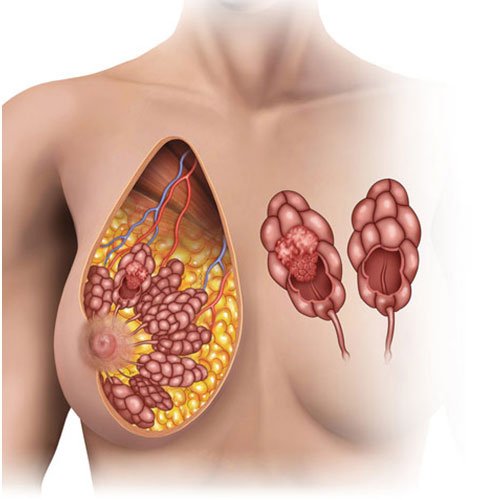Benign Breast
Benign breast conditions refer to non-cancerous changes in the breast tissue that can cause discomfort or concern but do not pose a threat to health. Understanding these conditions is crucial for women, as they can experience breast changes throughout their lives. Here are some common benign breast conditions:
While benign breast conditions can be concerning, they are typically not dangerous and do not require aggressive treatment. Understanding these conditions and maintaining regular breast health check-ups can help ensure any changes are monitored appropriately. If you experience any unusual symptoms, it’s important to consult with a healthcare professional for proper evaluation and reassurance.

1. Fibrocystic Breast Changes
This is a common condition characterized by lumpy or bumpy breast tissue, often accompanied by tenderness, especially before menstruation. These changes are due to hormonal fluctuations and are not associated with an increased risk of breast cancer.
2. Breast Cysts
Cysts are fluid-filled sacs that can develop in the breast tissue. They can vary in size and may be tender or painless. Cysts are typically benign and can be diagnosed through imaging techniques like ultrasound.
3. Fibroadenomas
These are solid, non-cancerous tumors made of glandular and connective tissue. They are most common in younger women and can feel like a marble in the breast. Fibroadenomas are usually painless and may require monitoring or surgical removal if they grow.
4. Mastitis
This condition involves inflammation of the breast tissue, often due to infection, particularly during breastfeeding. Symptoms may include pain, swelling, and redness in the affected area. Mastitis can usually be treated with antibiotics.
5. Nipple Discharge
Some women may experience discharge from the nipple that is clear or milky, which is usually benign. However, any unusual discharge, especially if it is bloody or occurs without squeezing, should be evaluated by a healthcare provider.
6. Calcifications
Breast calcifications are tiny deposits of calcium in the breast tissue, often discovered during a mammogram. Most calcifications are benign, but some types can indicate a higher risk of breast cancer, so further evaluation may be necessary.





